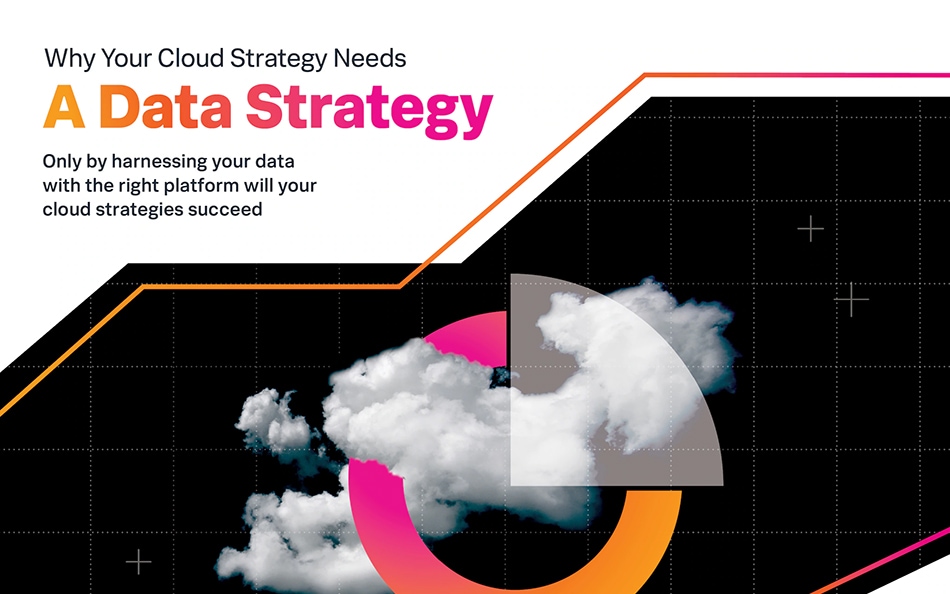Cloud Automation Explained

Although cloud computing is not a novelty in the IT world, navigating the complexity of maintaining a cloud environment is still a hassle for IT professionals and cloud administrators. Thankfully, like most IT functions, automation exists to save the day again.
Simply put, cloud automation is the process of automating the deployment and maintenance of cloud resources and services. It offers a faster and more effective way of going about cloud operations.
In this article, you’ll learn what cloud automation is, its benefits, applications, challenges, and best practices for getting the most from it.
Let’s begin!
What is cloud automation?
Cloud automation is the use of tools and processes to automate workload management in a cloud environment. The cloud environments can vary, though the most common types of cloud service models are SaaS, IaaS, and PaaS. Automation in the cloud covers cloud resource setup, scaling, and maintenance, which otherwise would be done manually through human intervention.
To understand why cloud automation exists, let’s go back to the basics of cloud computing.
In cloud computing, different components must be harmonized with the cloud configurations to keep things running smoothly. Different issues can crop up when cloud admins struggle to juggle all these in managing the cloud environment. Issues include:
- Performance levels will dip
- Cloud costs will skyrocket
- Compliance issues will rear their ugly heads
Cloud automation, therefore, exists to address these challenges proactively and with little to no human input. You can find applications of cloud automation in the Software Development Lifecycle (SDLC) for testing and deployment, cloud migration, and many other areas. More on that in the later part of this piece, but for now, let’s look at another interesting aspect of cloud automation.
Cloud automation vs. orchestration
It’s hard to discuss the application of cloud automation without orchestration:
- Automation is the use of scripts and tools to execute repetitive tasks
- Orchestration refers to the management of multiple processes and systems to achieve specific goals
So, cloud automation deals with individual computing tasks, while cloud orchestration considers how these multiple tasks can be automated to fit into a logical workflow. With orchestration, you want a situation where one task is being completed, another picks up, and so on like that to achieve an outcome.
For example, provisioning a virtual machine is a cloud task that can be automated. On the other hand, managing a CI/CD pipeline (which involves multiple processes) using Kubernetes is an example of cloud orchestration.
Both concepts depend on each other, so they are used interchangeably despite their differences. Automation works on a granular level to simplify task execution, while orchestration allows you to paint a broader picture of how multiple operations fit together.
Since they work together, most tools and technologies that carry out automation can also handle orchestration, and some of them are Ansible, Terraform, Kubernetes, and IBM cloud formation, amongst others.
Benefits of cloud automation
These are the following ways cloud automation helps cloud computing:
Efficiency and reliability
Thanks to cloud automation, there’s less manual labor involved in managing the cloud environment. Also, it enables faster deployments, judicious use of cloud resources, and data backup and recovery, which enhances productivity and lowers downtime.
Cloud security
Automation improves the security of your cloud infrastructure by automatically implementing security policies and compliance measures. This, in turn, makes it faster to detect incoming threats, respond to them, and reduce internal errors from humans that can leave the cloud architecture vulnerable to any form of attack.
Cost efficiency
Cloud cost management tools exist that help businesses optimize their cloud spend. This is through:
- Rate optimization using the right pricing models
- Cost prediction based on historical analysis of your cloud spend
- Monitoring of cost spikes and providing insights on how to handle them
Reduction in errors
More reliance on automated solutions than humans for routine tasks will ensure more accurate IT service delivery. Plus, these solutions help enforce configuration management, patching, and application testing.
Challenges of Cloud Automation
Despite its numerous benefits, cloud automation also has certain downsides, which have hampered its widespread adoption. These challenges are:
Complexity of cloud platforms
In the same way, vendor lock-in is a challenge of cloud computing and restricts cloud migration; the complexity of these cloud service providers can make it hard to adopt cloud automation. This is not surprising: recent DevSecOps research shows that manual deployments are still widespread even though automation can solve that.
In such cases, organizations create their automation platform or process without involving an external vendor.
Steep learning curve
IT teams may struggle to understand these automation solutions, and training takes time, slowing down the adoption rate. However, with appropriate documentation, it will be easier for employees to figure out automation for different tasks and integrate automation solutions into their organization’s cloud architecture.
High cost of cloud computing
Despite cost-effectiveness being one of the biggest strengths of cloud computing, adopting extra tools like cloud automation software can be costly for organizations, hindering them from enjoying the benefits of an automated cloud environment.
Common use cases of cloud automation
You can apply cloud automation to the following areas of your cloud operations:
Infrastructure provisioning/management
Automation streamlines infrastructure provisioning by:
- Deploying virtual machines, containers, and serverless functions on-demand
- Allocating and managing storage solutions like block storage, object storage, and databases.
- Automating the provisioning of networking components, including load balancers, firewalls, and virtual private clouds (VPCs)
- Scaling databases dynamically based on workload demands
- Ensuring configuration consistency across different environments using Infrastructure as Code (IaC) tools
- Autoscaling which can add or reduce resources to align with workload demands
(Related reading: cloud infrastructure.)
Cloud cost optimization
Automation solutions exist that help organizations optimize their cloud spend in the following ways:
- Allocating resources to meet workload demands
- Budgeting and forecasting of future cloud spend
- Regularly track and notify them of changes in cloud costs
- Detecting and turning off idle resources allows them to pay as they use and not for resources they don’t use
(Related reading: IT/tech spending trends.)
Monitoring and logging
Organizations can continuously monitor resource usage, set up alerts, and gain insights into system performance by implementing cloud automation. This function also helps detect issues and remediate them in real time.
Other areas are:
- Version control
- DevOps automation
- Security automation
- Incident management
Cloud automation solutions
The easiest way to adopt cloud automation is through existing and proven tools, technologies, and frameworks. However, before adopting any of these solutions, evaluate them based on cost, compatibility with your current IT infrastructure, scalability, and flexibility.
Let’s look at different categories of cloud automation solutions.
Cloud configuration management tools are used to run different cloud configuration states. According to Google, the three main cloud configuration types are public, private, and hybrid. They include:
- Ansible
- Puppet
- Chef
- Terraform
- Rudder
Cloud infrastructure as code tools. Infrastructure as Code, or IaC, is the practice of automatically provisioning and configuring infrastructure using code and scripts. Tools under this category are:
- Terraform
- Pulumi
- Google Cloud deployment platform
- AWS CloudFormation
- Azure Resource Manager
Cloud orchestration platforms are used to automate the coordination and management of cloud resources and workflows. They include:
- Cloudbolt
- Morpheus
- Cloudify
- Kubernetes
- IBM Cloud Orchestrator
Cloud security automation tools automate the application of security processes in your environment. Examples of such tools include:
- AWS Security Hub
- Azure Security Center
- Google Cloud Security Command Center
- SIEM solutions (security information and event management), like Splunk Enterprise Security
- Splunk SOAR (security orchestration, automation, and response)
Cloud monitoring and logging tools monitor, collect, analyze, and store data to provide insight into the health and performance of cloud resources and applications.
Some notable cloud monitoring and loggings tools are Splunk Observability Cloud and Splunk AppDynamics. More tools include Azure Monitor, AWS CloudWatch and Google Cloud Operations.
(Related reading: cloud analytics.)
Best practices for implementing cloud automation
The following tips will help you yield the most results when you’re ready to implement cloud automation:
Set clear goals
Even though cloud automation is a logical next step when optimizing your cloud computing, you shouldn’t jump into it without defining your goal. Otherwise, it will be money down the drain, wasted effort and time, and you will end up introducing more layers of complexity into your cloud environment.
These goals could be:
- Reducing cloud costs
- Enhancing security
- Maximizing cloud resources
Start small
As with all new technologies, starting on a small scale before going in on complex cloud automation projects is best. One way to start small is by identifying automation opportunities within your infrastructure and dedicating a tool to handling them.
So, suppose you need to automate the monitoring of your cloud application performance. In that case, you can focus on integrating an application performance monitoring tool, which falls under cloud monitoring and logging tools discussed above, instead of opting for automation or orchestration tools that tackle multiple use cases.
This approach also works for smaller organizations trying to manage their budget as they adopt cloud automation.
Keep learning and improving
Continuous learning allows all stakeholders and team members to stay informed on the latest developments and helps refine their understanding of cloud automation. Periodic seminars, online courses, and industry blogs are helpful in accomplishing this.
Document as much as possible
From your workflows to your processes to your automation rules and scripts, everything should be documented and templatized. Then, before they are executed, these scripts and workflows should be tested based on:
- Correctness
- Completeness
- Functionality
- Any other criteria that you deem fit
Afterward, keep monitoring your outcomes and update your documentation.
Integrate cloud automation into the application development lifecycle
Since your software delivery is one of the areas that will benefit from cloud automation, it makes sense that automation is integrated into the SDLC.
Doing this will lead to faster deployments, ensure consistency in whatever goes on in the development environment, and contribute to alignment with DevOps practices.
Embrace the power of cloud automation
Automation in every space it is applied is like a cheat code for getting things done more effectively, and cloud computing is no exception. So, consider researching cloud automation solutions and deciding how much of your cloud operations you’d like to automate. Your team will thank you for it, and your organization will become more innovative thanks to the power of automation.
See an error or have a suggestion? Please let us know by emailing splunkblogs@cisco.com.
This posting does not necessarily represent Splunk's position, strategies or opinion.
Related Articles
About Splunk
The world’s leading organizations rely on Splunk, a Cisco company, to continuously strengthen digital resilience with our unified security and observability platform, powered by industry-leading AI.
Our customers trust Splunk’s award-winning security and observability solutions to secure and improve the reliability of their complex digital environments, at any scale.




